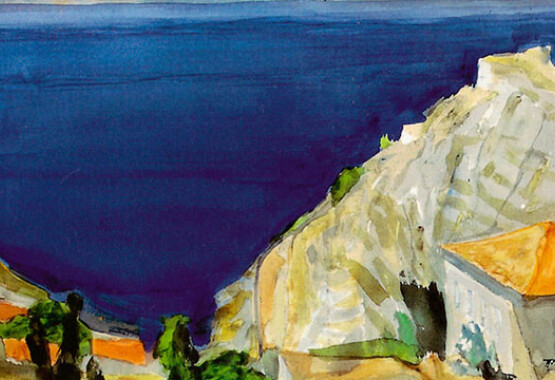
ELEFSINA
The Archaeological Museum of Elefsina (aka Eleusis) houses important finds from the excavations in the Sanctuary and the cemeteries of the ancient city of Eleusis.
Visiting the museum of Eleusis, you will have the chance to travel into Eleusi’s distant past through the six different convention halls. It is located on the southeast side of the acropolis of the shrine and built in 1889 by the architect J. Moussis.
Some of the most important items of the exhibition are consider a big collection of ancient jars as the Protoattic amphora (650 B.C.) which graces the first room, two headless statues, the first belongs to the goddess Demeter since 5th century B.C. and the second to Asklepios, original work of the 4th century B.C.
Two statues devoted to Pershephone, the "fleeing kore", the statue probably belonged to the sculptural decoration of the Sacred House and dates to the early 5th century B.C. and the "Kistophoros kore", the colossal statue which supported the roof of the "Lesser Propylaea" of the Sanctuary. Surviving art and sculpture from the site include relief panels showing Demeter and Persephone and clay votive plaques depicting rites from the Mysteries.
All phases of the life of the site are represented, from Prehistoric Times to the late Roman Period. In 1960 the museum was renovated and enriched with new finds from the excavations and in 1973 two patterns which represent the main buildings of the Sanctuary of the 6th century B.C and 2nd century A.C. were added.
Archaeological Museum of Elefsina
The Archaeological Museum of Elefsina (Eleusis) , invites you to a journey to the past of the city, one of the five sacred cities of Ancient Greece.
The Archaeological Museum of Elefsina (aka Eleusis) houses important finds from the excavations in the Sanctuary and the cemeteries of the ancient city of Eleusis.Visiting the museum of Eleusis, you will have the chance to travel into Eleusi’s distant past through the six different convention halls. It is located on the southeast side of the acropolis of the shrine and built in 1889 by the architect J. Moussis.
The Exhibition
This museum features a collection of artifacts of cultural, historical and scientific value. Its proximity to the archaeological site will give you the opportunity to have a broader understanding of life, the myths and mysteries.Some of the most important items of the exhibition are consider a big collection of ancient jars as the Protoattic amphora (650 B.C.) which graces the first room, two headless statues, the first belongs to the goddess Demeter since 5th century B.C. and the second to Asklepios, original work of the 4th century B.C.
Two statues devoted to Pershephone, the "fleeing kore", the statue probably belonged to the sculptural decoration of the Sacred House and dates to the early 5th century B.C. and the "Kistophoros kore", the colossal statue which supported the roof of the "Lesser Propylaea" of the Sanctuary. Surviving art and sculpture from the site include relief panels showing Demeter and Persephone and clay votive plaques depicting rites from the Mysteries.
All phases of the life of the site are represented, from Prehistoric Times to the late Roman Period. In 1960 the museum was renovated and enriched with new finds from the excavations and in 1973 two patterns which represent the main buildings of the Sanctuary of the 6th century B.C and 2nd century A.C. were added.




